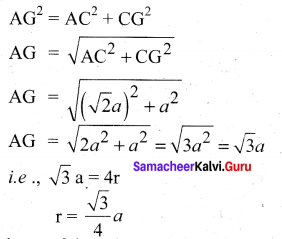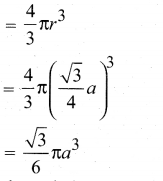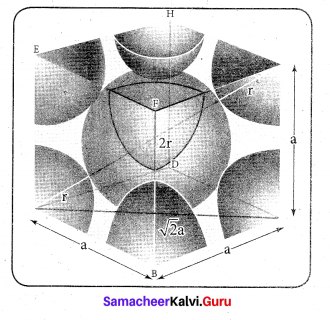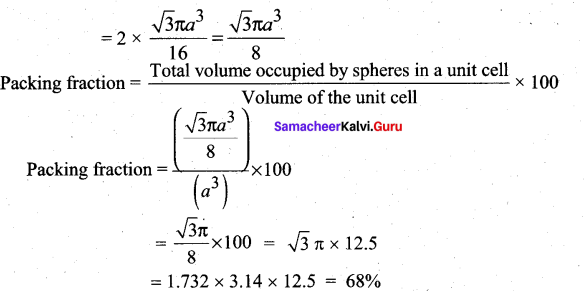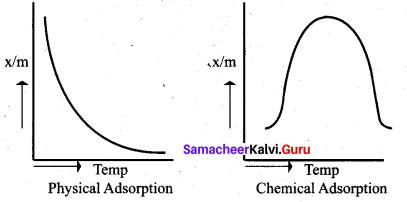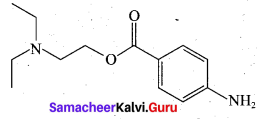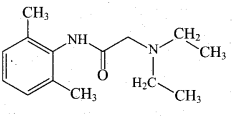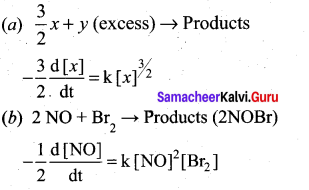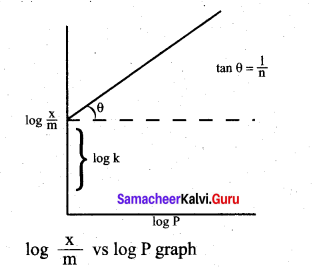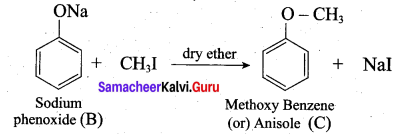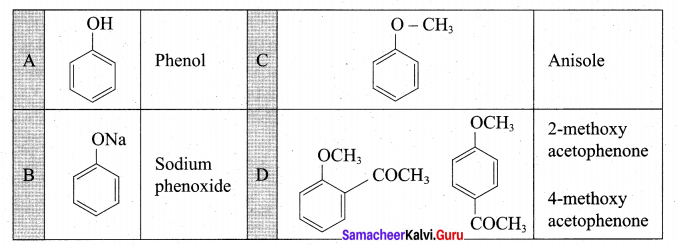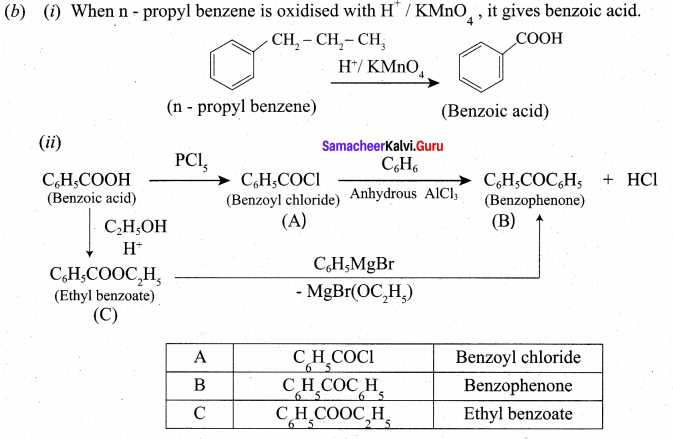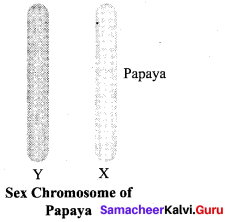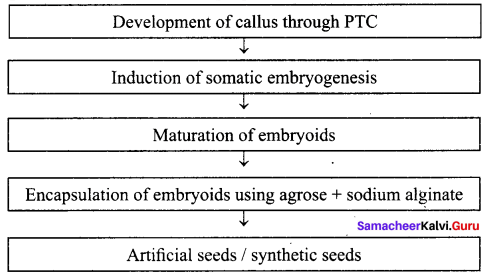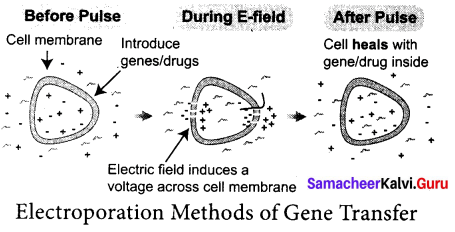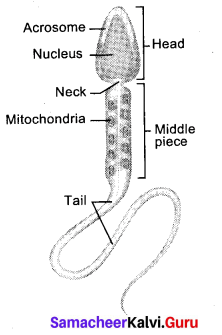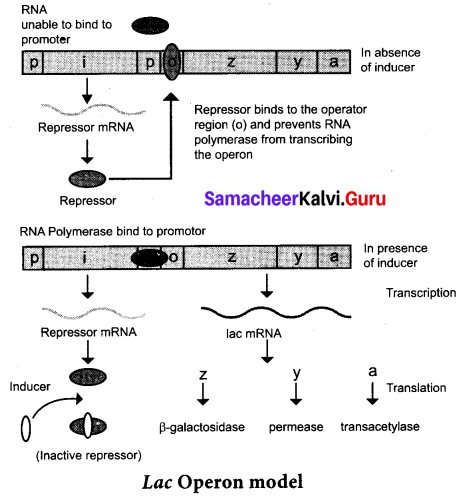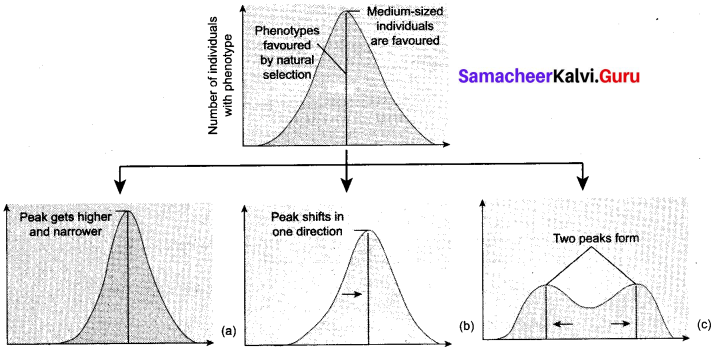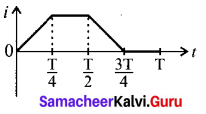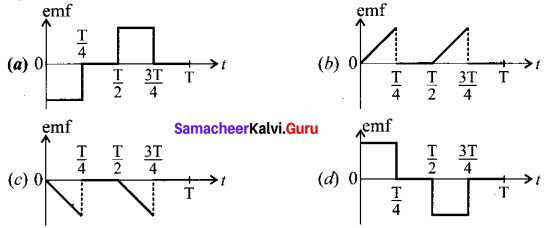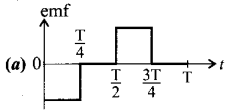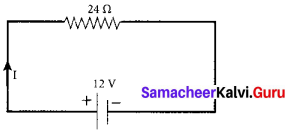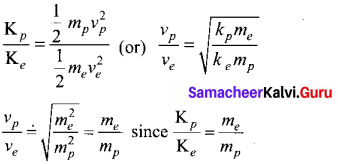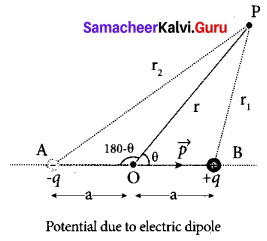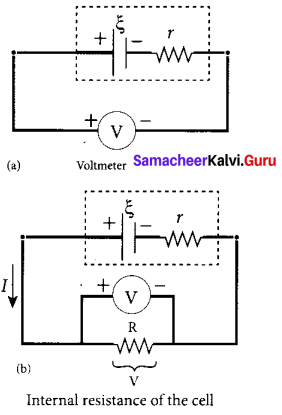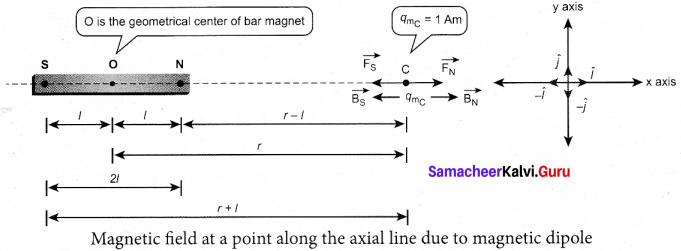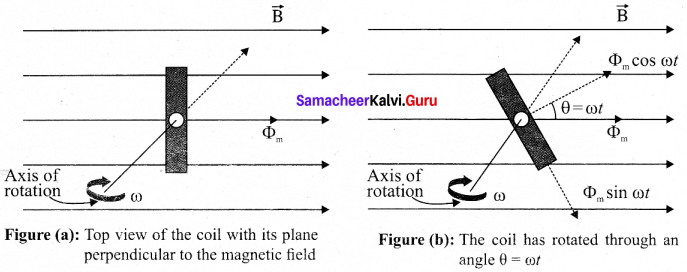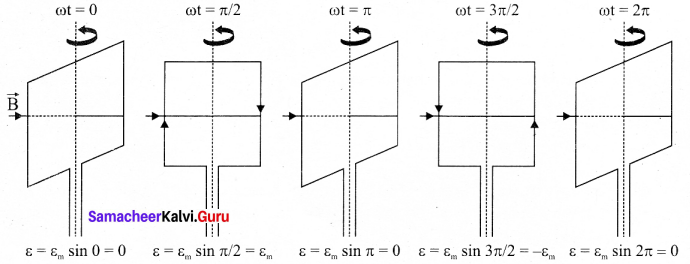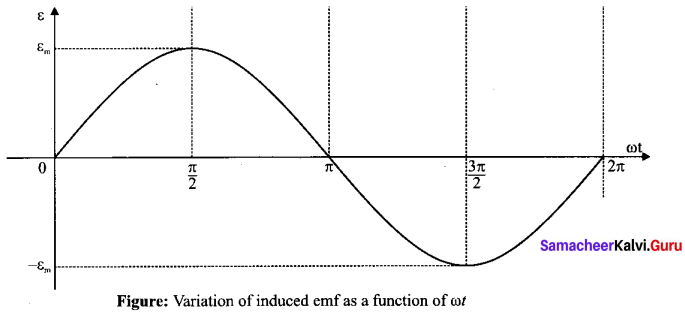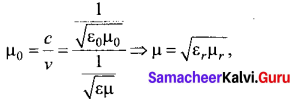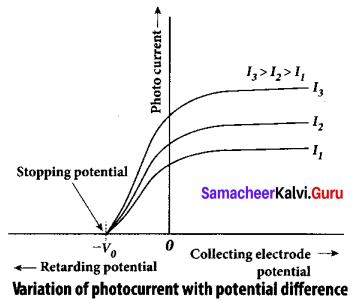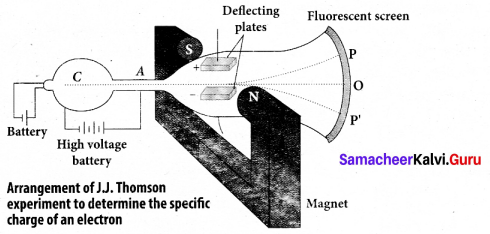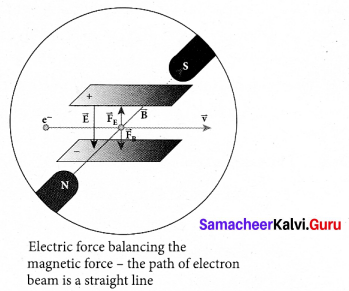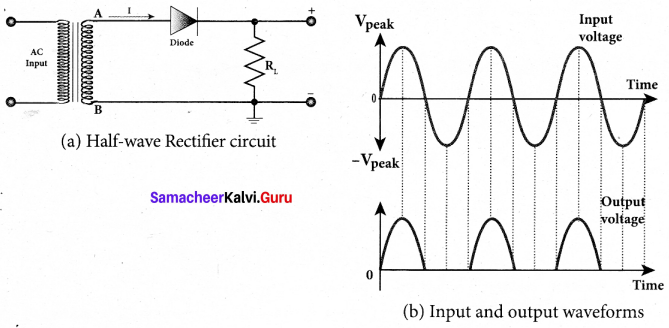Students can Download Samacheer Kalvi 10th Tamil Model Question Paper 1 Pdf, Samacheer Kalvi 10th Tamil Model Question Papers helps you to revise the complete Tamilnadu State Board New Syllabus and score more marks in your examinations.
Tamil Nadu Samacheer Kalvi 10th Tamil Model Question Paper 1
நேரம்: 3.00 மணி
மதிப்பெண்கள் : 100
(குறிப்புகள்:
- இவ்வினாத்தாள் ஐந்து பகுதிகளைக் கொண்டது. அனைத்து பகுதிகளுக்கும் விடையளிக்க – வேண்டும். தேவையான இடங்களில் உள் தேர்வு வினாக்கள் கொடுக்கப்பட்டுள்ளது. காக
- பகுதி I, II, III, IV மற்றும் Vல் உள்ள அனைத்து வினாக்களுக்குத் தனித்தனியே விடையளிக்க வேண்டும்.
- வினா எண். 1 முதல் 15 வரை பகுதி-1ல் தேர்வு செய்யும் வினாக்கள் தரப்பட்டுள்ளன. ஒவ்வொரு வினாவிற்கும் ஒரு மதிப்பெண். சரியான விடையைத் தேர்ந்தெடுத்து குறியீட்டுடன் எழுதவும்.
- வினா எண் 16 முதல் 28 வரை பகுதி-IIல் இரண்டு மதிப்பெண் வினாக்கள் தரப்பட்டுள்ளன: ஏதேனும் 9 வினாக்களுக்கு மட்டும் விடையளிக்கவும்.
- வினா எண் 29 முதல் 37 வரை பகுதி-IIIல் மூன்று மதிப்பெண் வினாக்கள் தரப்பட்டுள்ளன. –
ஏதேனும் 6 வினாக்களுக்கு மட்டும் விடையளிக்கவும்.
- வினா எண் 38 முதல் 42 வரை பகுதி-IVல் ஐந்து மதிப்பெண் வினாக்கள் தரப்பட்டுள்ளன. ஏதேனும் 5 வினாக்களுக்கு மட்டும் விடையளிக்கவும்.
- வினா எண் 43 முதல் 45 வரை பகுதி-Vல் எட்டு மதிப்பெண் வினாக்கள் தரப்பட்டுள்ளன. அனைத்து வினாவிற்கும் விடையளிக்கவும்.

பகுதி – 1 (மதிப்பெண்கள்: 15)
(i) அனைத்து வினாக்களுக்கும் விடையளிக்கவும்.
(ii) கொடுக்கப்பட்ட நான்கு விடைகளில் சரியான விடையினைத் தேர்ந்தெடுத்துக் குறியீட்டுடன் விடையினையும் சேர்த்து எழுதுக. [15 x 1 = 15]
(குறிப்பு: விடைகள் தடித்த எழுத்தில் உள்ளன.)
Question 1.
”சாகும் போதும் தமிழ் படித்துச் சாகவேண்டும் என்றன் சாம்பலும் தமிழ் மணந்து வேகவேண்டும்” என்று பாடியவர் யார்?
(அ) பாரதிதாசன்
(ஆ) பெருஞ்சித்திரனார்
(இ) சச்சிதானந்தன்
(ஈ) ஆறுமுகநாவலர்
Answer:
(இ) சச்சிதானந்தன்
Question 2.
‘சிந்துக்குத் தந்தை என்று பாராட்டப்பட்டவர்……….
(அ) பாரதியார்
(ஆ) பாரதிதாசன்
(இ) சுரதா
(ஈ) கவிமணி
Answer:
(அ) பாரதியார்

Question 3.
ஒரு தொடர்மொழியில் இரண்டு சொற்கள் இருந்து அவற்றின் இடையே சொல்லோ உருபோ இன்றி பொருள் தருவது……………… எனப்படும்.
(அ) தொகை நிலைத் தொடர்
(ஆ) பெயரெச்சத் தொடர்
(இ) வினையெச்சத் தொடர்
(ஈ) விளித் தொடர்
Answer:
(அ) தொகை நிலைத் தொடர்
Question 4.
மொழிபெயர்த்தல் என்னும் தொடரைத் தொல்காப்பியர் கையாண்ட இடம் ……………
(அ) பெயரியல்
(ஆ) வினையியல்
(இ) மரபியல்
(ஈ) உயிரியல்
Answer:
(இ) மரபியல்

Question 5.
புகழ்ந்தால் என்னுடல் புல்லரிக் காது இகழ்ந்தால் என்மனம் இறந்து விடாது’ – இவ்வடிகளில் அமைந்துள்ள முரண் சொல்………
அ) என்னுடல், என் மனம்
(ஆ) புல்லரிக்காது இறந்துவிடாது
(இ) புகழ்ந்தால், இகழ்ந்தால்
(ஈ) புகழ்ந்தால் என் மனம்
Answer:
(இ) புகழ்ந்தால், இகழ்ந்தால்
Question 6.
உயிரினங்களில் மனிதரை உயர்த்திக்காட்டுவது அவர்களின்
(அ) சிந்தனை ஆற்றல்
(ஆ) செல்வம்
(இ) வாழ்நாள்
(ஈ) ஆற்றல்
Answer:
(அ) சிந்தனை ஆற்றல்
Question 7.
சாலச் சிறந்தது’ என்பது …….. தொடராகும்.
(அ) பெயரெச்சத்தொடர்
(ஆ) உரிச்சொல்தொடர்
(இ) விளித்தொடர்
(ஈ) வினையெச்சத்தொடர்
Answer:
(ஆ) உரிச்சொல்தொடர்

Question 8.
நன்மொழி என்பதன் இலக்கணக் குறிப்பு ….
(அ) வியங்கோள் வினைமுற்று
(ஆ) பண்புத்தொகை
(இ) வினையெச்சம்
(ஈ) உம்மைத்தொகை
Answer:
(ஆ) பண்புத்தொகை
Question 9.
அறிஞருக்கு நூல், அறிஞரது நூல் ஆகிய சொற்றொடர்களில் பொருளை வேறுபடுத்தக் காரணமாக அமைவது
(அ) வேற்றுமை உருபு
(ஆ) எழுவாய்
(இ) உவம உருபு
(ஈ) உரிச்சொல்
Answer:
(அ) வேற்றுமை உருபு

Question 10.
விருந்தினரைப் பேணுவதற்குப் பொருள் தேவைப்பட்டதால் தன் கருங்கோட்டுச் சீறியாழைப் பயணம் வைத்து விருந்தளித்தான் என்கிறது புறநானூறு – இதன் விருந்து போற்றிய நிலை……….
(அ) நிலத்திற்கேற்ற விருந்து
(ஆ) இன்மையிலும் விருந்து
(இ) இரவிலும் விருந்து
(ஈ) உற்றாரின் விருந்து
Answer:
(ஆ) இன்மையிலும் விருந்து
Question 11.
முல்லைப்பாட்டை இயற்றியவர்………… ஆவார்.
(அ) பேயனார்
(ஆ) ஓதலாந்தையார்
(இ) நப்பூதனார்
(ஈ) நக்கண்ணையார்
Answer:
(இ) நப்பூதனார்

பாடலைப் படித்துப் பின்வரும் வினாக்களுக்கு (12, 13, 14, 15) விடை தருக.
இவைசரி யென்றால் இயம்புவதென் தொழில்
இவைதவ றாயின் எதிர்ப்பதென் வேலை!
ஆக்கல் அளித்தல் அழித்தல் இம் மூன்றும்
அவனும் யானுமே அறிந்தவை! அறிக!
Question 12.
இப்பாடலின் ஆசிரியர் யார்?
(அ) கண்ண தாசன்
(ஆ) பாரதிதாசன்
(இ) ஜெயகாந்தன்
(ஈ) பாரதியார்
Answer:
(அ) கண்ண தாசன்
Question 13.
முத்தொழில்கள் யாவை?
(அ) அறம், பொருள், இன்பம்
(ஆ) இயல், இசை, நாடகம்
(இ) ஆக்கல், அழித்தல், காத்தல்
(ஈ) ஆடல், பாடல், ஓடுதல்
Answer:
(இ) ஆக்கல், அழித்தல், காத்தல்

Question 14.
இப்பாடல் இடம் பெற்ற அடி எதுகைகளை எழுதுக.
(அ) இவை சரி, இவை தவறு
(ஆ) சரி, தவறு
(இ) இவை, இயம்பு
(ஈ) மூன்றும், ஆறும்
Answer:
(அ) இவை சரி, இவை தவறு
Question 15.
இப்பாடல் இடம் பெற்ற நூல் எது?
(அ) அன்னை மொழியே
(ஆ) காசிக்காண்டம்
(இ) முல்லைப்பாட்டு
(ஈ) காலக்கணிதம்
Answer:
(ஈ) காலக்கணிதம்

பகுதி – II (மதிப்பெண்கள்: 18)
பிரிவு – 1
எவையேனும் நான்கு வினாக்களுக்கு மட்டும் குறுகிய விடையளிக்க.
21 ஆவது வினாவிற்குக் கட்டாயமாக விடையளிக்க வேண்டும். [4×2 = 8]
Question 16.
விடைக்கேற்ற வினா அமைக்க.
Answer:
(அ) “ஒரு மொழியில் உணர்த்தப்பட்டதை வேறொரு மொழியில் வெளியிடுவது மொழி பெயர்ப்பு ” என்கிறார் மணவை முஸ்தபா.
(ஆ) இறைவனுக்கு உகந்த கலையாகப் பரதநாட்டியம் கருதப்படுகிறது.
விடை: அ) மொழிபெயர்ப்பு பற்றி மணவை முஸ்தபா கருத்து யாது?
ஆ) பரத நாட்டியம் எவ்வகைக் கலையாகக் கருதப்படுகிறது?
Question 17.
மழைமேகம் எவ்வாறு பெருமழை பெய்கிறது?
Answer:
மழைமேகம் ஒலிக்கும் கடலின் குளிர்நீரைப் பருகிப் பெருந்தோற்றம் கொண்டு வலமாய் எழுந்து மலையைச் சூழ்ந்து வேகத்துடன் பெருமழை பொழிகிறது.

Question 18.
மருத்துவத்தில் மருந்துடன் அன்பும் நம்பிக்கையும் ஆற்றும் பாங்கினை எழுதுக.
Answer:
- மருத்துவர் உடலில் ஏற்பட்ட புண்ணைக் கத்தியால் அறுத்துச் சுட்டாலும் அது நன்மைக்கே என்று உணர்ந்து நோயாளி அவரை நேசிப்பார்.
- வித்துவக்கோட்டில் எழுந்தருளியிருக்கும் அன்னையே! அதுபோன்று நீ உனது நாக்கை வைகை மாதிரி வினாத்தாள் விளையாட்டால்.
- நீங்காத துன்பத்தை எனக்குத் தந்தாலும் உன் அடியவனாகிய நான் உன் அருளையே எப்பொழுதும் எதிர்பார்த்து வாழ்கின்றேன்.
Question 19.
அமிலமழை குறிப்பு வரைக.
Answer:
கந்தக டை ஆக்சைடு, நைட்ரஜன் டை ஆக்சைடு ஆகியவை மழை பெய்யும் போது நீரில் கரைந்துவிடுவதால் அமிலமழை பெய்கிறது.

Question 20.
தானியம் ஏதும் இல்லாத நிலையில் விதைக்காக வைத்திருந்த தினையை உரலில் இட்டுக் குற்றியெடுத்து விருந்தினருக்கு விருந்தளித்தாள் தலைவி’ என்பது இலக்கியச் செய்தி விருந்தோம்பலுக்குச் செல்வம் மட்டுமே இன்றியமையாத ஒன்றா? உங்கள் கருத்தைக் குறிப்பிடுக.
Answer:
விருந்தளிக்க செல்வம் மட்டும் இருந்தால் போதாது. விருந்து கொடுக்க வேண்டும் என்ற எண்ணமும் வேண்டும். பணம் இல்லை என்றாலும், எண்ணம் இருந்தால் தன்னிடம் இல்லை என்றாலும், பிறரிடம் கடன் பெற்றாவது விருந்து அளிக்கப்படும். அதற்குப் பணம் முக்கியம் இல்லை. எண்ணம் தான் முக்கியம்.
Question 21.
குன்றேறி ‘ எனத் தொடங்கும் திருக்குறளை எழுதுக.
Answer:
குன்றேறி யானைப்போர் கண்டற்றால் தன்கைத்தொன் றுண்டாகச் செய்வான் வினை.

பிரிவு – 2
எவையேனும் ஐந்து வினாக்களுக்கு மட்டும் குறுகிய விடையளிக்கவும். [5×2 = 10]
Question 22.
வினைமுற்றை வினையாலணையும் பெயராக மாற்றுக. பொது அறிவு நூல்களைத் தேடிப் படித்தார். போட்டித் தேர்வில் வென்றார்.
Answer:
பொது அறிவு நூல்களைத் தேடிப் படித்தவர் போட்டித் தேர்வில் வென்றார்.
Question 23.
தொடரில் விடுபட்ட வண்ணங்களை உங்கள் எண்ணங்களால் நிரப்புக. (வெள்ளை , பச்சை , கருக்கத், சிவந்தது)
Answer:
- வானம் கருக்கத் தொடங்குகிறது.
- அனைவரின் பாராட்டுகளால், வெட்கத்தில் பாடகர் முகம் சிவந்தது.
- வெள்ளை மனம் உள்ளவரை அப்பாவி என்கிறோம்.
- கண்ணுக்குக் குளுமையாக இருக்கும் பச்சை புல்வெளிகள்

Question 24.
இருசொற்களைப் பயன்படுத்தி ஒரு சொல் அமைக்க இயற்கை – செயற்கை
Answer:
பாதை தெரியாத இயற்கைக் காடுகளில் பயணிக்கச் செயற்கைக் கருவிகள் யன்படுகின்றன.
Question 25.
கலைச்சொற்கள் தருக.
Answer:
- Cosmic rays – விண்வெளிக் கதிர்கள்
- Bio technology – உயிரித் தொழில்நுட்பம்
Question 26.
பார் – வேர்ச்சொல்லைக் கொண்டு எழுவாய்த் தொடர், வினையெச்சத் தொடர் ஆகியவை எழுதுக.
Answer:


Question 27.
நிறுத்தக் குறிகளை இடுக. மென்பொருள்கள் கவிதைகள் கதைகள் விதவிதமான எழுத்து நடைகள் போன்றவற்றைக் கற்றுக் கொண்டு மனிதர்களுடன் போட்டியிட்டாலும் வியப்பதற்கில்லை.
Answer:
மென்பொருள்கள் கவிதைகள், கதைகள், விதவிதமான எழுத்து நடைகள் போன்றவற்றைக் கற்றுக் கொண்டு மனிதர்களுடன் போட்டியிட்டாலும் வியப்பதற்கில்லை.
Question 28.
இகழ்தல், நண்பா – இலக்கணக் குறிப்பு தருக.
Answer:
இகழ்தல் – தொழிற்பெயர்
நண்பா – விளித்தொடர்
பகுதி – III (மதிப்பெண்க ள்: 18)
பிரிவு -1
எவையேனும் இரண்டு வினாக்களுக்கு மட்டும் சுருக்கமாக விடையளிக்க. [2 x 3 = 6]
Question 29.
மனிதர்களின் மூளையைப் போன்றது. செயற்கை நுண்ணறிவு கொண்ட கணினியின் மென்பொருள். மனிதனைப் போலவே பேச, எழுத, சிந்திக்க இத்தொழில்நுட்பம் மேம்படுத்தப்படுகிறது. இதனால் மனிதகுலத்துக்கு ஏற்படுகிற நன்மைகளைப் பற்றி அறிவியல் இதழ் ஒன்றுக்கு எதிர்காலத் தொழில்நுட்பம் என்ற தலைப்பில் எழுதுக.
Answer:
வேலை வாய்ப்புகளில் கணிசமான மாற்றங்களைச் செயற்கை நுண்ணறிவு கொண்டுவரப்போகிறது. எதிர்காலத்தில் ரோபோ’ விடம் குழந்தையை ஒப்படைத்துவிட்டு நிம்மதியாக அலுவலகம் செல்லும் பெற்றோர்களை நாம் பார்க்கப்போகிறோம். வயதானவர்களுக்கு உதவிகள் செய்தும், அவர்களுக்கு உற்ற தோழனாய்ப் பேச்சுக் கொடுத்தும் பேணும் ரோபோக்களை நாம் பார்க்கப்போகிறோம்! செயற்கை நுண்ணறிவுள்ள ரோபோக்களால், மனிதன் செய்ய இயலாத, அலுப்புத் தட்டக்கூடிய, கடினமான செயல்களைச் செய்யமுடியும்; மனித முயற்சியில் உயிராபத்தை விளைவிக்கக் கூடிய செயல்களைச் செய்யமுடியும்!

புதிய வணிக வாய்ப்புகளைச் செயற்கை நுண்ணறிவு நல்குகிறது. பெருநிறுவனங்கள் தங்கள் பொருள்களை உற்பத்தி செய்யவும் சந்தைப்படுத்தவும் செயற்கை நுண்ணறிவைப் பயன்படுத்துகின்றன. விடுதிகளில், வங்கிகளில், அலுவலகங்களில் தற்போது மனிதர் அளிக்கும் சேவைகளை ரோபோக்கள் அளிக்கும். மேலும், நம்முடன் உரையாடுவது, ஆலோசனை வழங்குவது, பயண ஏற்பாடு செய்து தருவது, தண்ணீர் கொண்டு வந்து தருவது, உடன் வந்திருக்கும் குழந்தைகளுக்கு வேடிக்கை காட்டுவது எனப் பலவற்றைச் செய்யும்.
எதிர்காலத்தில் நாம் பயணிக்கும் ஊர்திகளைச் செயற்கை நுண்ணறிவைக் கொண்டு இயக்கவேண்டியிருக்கும். இத்தகைய ஊர்திகள் ஏற்படுத்தும் விபத்துகள் குறையும், போக்குவரத்து நெரிசல் இருக்காது. அதன்மூலம் பயண நேரம் குறையும், எரிபொருள் மிச்சப்படும். இத்தகைய மென்பொருள்கள் கவிதைகள், கதைகள், விதவிதமான எழுத்து நடைகள் போன்றவற்றைக் கற்றுக்கொண்டு மனிதர்களுடன் போட்டியிட்டாலும் வியப்பதற்கில்லை! கல்வித் துறையில் இத்தொழில் நுட்பத்தைப் பலவிதங்களில் பயன்படுத்தும் சாத்தியக்கூறுகள் இருக்கின்றன.

Question 30.
ஜெயகாந்தன் சிறுகதை மன்னன்’ என எவ்வாறு பெயர் பெற்றார்?
Answer:
- ஜெயகாந்தன் பேசி, “எதற்காக எழுதுகிறேன்?” என்ற தலைப்பில் கட்டுரையாகத் தொகுக்கப்பட்ட பகுதியும், ‘யுகசந்தி’ என்ற தொகுப்பில் இடம்பெற்றுள்ள ‘தர்க்கத்திற்கு அப்பால்’ என்னும் சிறுகதையும் பாடப்பகுதியில் இடம்பெற்றுள்ளன.
- தான் வாழ்ந்த காலத்தில் சிக்கல்கள் பலவற்றை ஆராய், எடுத்துச் சொல்ல, தன் பார்வைக்கு உட்பட்ட தீர்ப்பைச் சொல்ல அவர் மேற்கொண்ட நடவடிக்கையே படைப்பு.
- அவருடைய படைப்புகள் உணர்ச்சி சார்ந்த எதிர்வினைகளாக இருக்கின்றன. இதுவே அவருக்குச் சிறுகதை மன்னன் என்ற பட்டத்தைத் தேடித்தந்தது.
- இவர் குறும்புதினங்களையும், புதினங்களையும், கட்டுரைகளையும், கவிதைகளையும் படைத்துள்ளார். தன் கதைகளைத் திரைப்படமாக இயக்கியிருக்கிறார்.
- தலைசிறந்த உரத்த சிந்தனைப் பேச்சாளராகவும் திகழ்ந்தார்; சாகித்திய அகாதெமி விருதையும். ஞானபீட விருதையும் பெற்ற இவருடைய கதைகள் பிறமொழிகளில் மொழிபெயர்க்கப்பட்டுள்ளன.

Question 31.
உரைப்பத்தியைப் படித்து வினாக்களுக்கு விடை தருக.
Answer:
கொடையின் சிறப்பால் வள்ளல் எழுவர் போற்றப்படுவது, பழந்தமிழர் கொடை மாட்சியைப் புலப்படுத்துகிறது. எழுவரின் கொடைப் பெருமை சிறுபாணாற்றுப்படையிலும், பெருஞ்சித்திரனார் பாடலிலும் பதிவு செய்யப்பட்டிருப்பது குறிப்பிடத்தக்கது. ஆற்றுப்படை இலக்கியங்கள், கொடை இலக்கியங்களாகவே உள்ளன. பதிற்றுப்பத்து சேர அரசர்களின் கொடைப் பதிவாகவே உள்ளது.
(அ) வள்ளல்களின் எண்ணிக்கை யாது?
கடையேழு வள்ளல்கள்
(ஆ) எழுவரின் கொடைச் சிறப்பைக் கூறும் நூல்கள் எவை?
Answer:
- சிறுபாணாற்றுப்படை
- பெருஞ்சித்திரனார் பாடல்
(இ) பதிற்றுப்பத்து எந்த அரசரைப் பற்றிக் கூறுகிறது?
Answer:
சேர அரசர்

பிரிவு – 2
எவையேனும் இரண்டு வினாக்களுக்கு மட்டும் சுருக்கமாக விடையளிக்க.
34 ஆவது வினாவிற்குக் கட்டாயமாக விடையளிக்க வேண்டும். [2 x 3 = 6]
Question 32.
வைத்தியநாதபுரி முருகன் குழந்தையாக அணிந்திருக்கும் அணிகலன்களுடன் செங்கீரை ஆடிய நயத்தை விளக்குக.
Answer:
- திருவடியில் அணிந்த சிறு செம்பொன்னால் ஆன கிண்கிணிகளோடு சிலம்புகளும் சேர்ந்து ஆடட்டும்.
- இடையில் அரைஞாண் மணியோடு ஒளிவீசுகின்ற அரைவடங்கள் ஆடட்டும். பசும்பொன் என ஒளிரும் தொந்தியுடன் சிறுவயிறு சரிந்தாடட்டும்.
- பட்டம் கட்டிய நெற்றியில் விளங்குகின்ற பொட்டின் வட்டி வடிவான சுட்டி பதிந்தாடட்டும். கம்பிகளால் உருவான குண்டலங்களும் காதின் குழைகளும் அசைந்தாடட்டும்.
- உச்சிக் கொண்டையும் அதில் சுற்றிக் கட்டப்பட்டுள்ள ஒளியுள்ள முத்துக்களோடு ஆடட்டும்.
- தொன்மையான வைத்தியநாதபுரியில் எழுந்தருளிய முருகனே! செங்கீரை ஆடி அருள்க!
- இவற்றுடன் அழகிய பவளம் போன்ற திருமேனியும் ஆட, செங்கீரை ஆடுக.
Question 33.
தமிழழகனார் தமிழையும் கடலையும் இரட்டுறமொழியும் பாங்கினை விளக்குக.
Answer:
தமிழ் :
- தமிழ், இயல், இசை, நாடகம் என முத்தமிழாய் வளர்ந்தது; முதல் இடை கடை ஆகிய முச்சங்கங்களால் வளர்க்கப்பட்டது.
- ஐம்பெருங்காப்பியங்களை அணிகலன்களாகப் பெற்றது. சங்கப் பலகையில் அமர்ந்திருந்த சங்கப்புலவர்களால் காக்கப்பட்டது.

கடல் :
- கடல், முத்தினையும் அமிழ்தினையும் தருகிறது.
- வெண்சங்கு, சலஞ்சலம், பாஞ்சசன்யம் ஆகிய மூன்று வகையான சங்குகளைத் தருகிறது. மிகுதியான வணிகக் கப்பல்கள் செல்லும்படி இருக்கிறது.
- தன் அலையால் சங்கினைத் தடுத்து நிறுத்திக் காக்கிறது.
Question 34.
அடிபிறழாமல் எழுதுக.
(அ) “சிறுதாம்பு ” எனத் தொடங்கும் முல்லைப்பாட்டு பாடல்.
Answer:
சிறுதாம்பு தொடுத்த பசலைக் கன்றின்
உறுதுயர் அலமரல் நோக்கி, ஆய்மகள்
நடுங்கு சுவல் அசைத்த கையள், ” கைய
கொடுங்கோற் கோவலர் பின்நின்று உய்த்தர
இன்னே வருகுவர், தாயர்” என்போள்
நன்னர் நன்மொழி கேட்டனம் – நப்பூதனார்
(அல்லது)
(ஆ) “வாளால் அறுத்து” எனத் தொடங்கும் பெருமாள் திருமொழி பாடல்.
Answer:
வாளால் அறுத்துச் சுடினும் மருத்துவன்பால்
மாளாத காதல் நோயாளன் போல் மாயத்தால்
மீளாத் துயர்தரினும் வித்துவக் கோட்டம்மா! நீ
ஆளா உனதருளே பார்ப்பன் அடியேனே. – குலசேகராழ்வார்

பிரிவு – 3
எவையேனும் இரண்டு வினாக்களுக்கு மட்டும் சுருக்கமாக விடையளிக்க. [2 x 3 = 6]
Question 35.
ஆசிரியப்பாவின் பொது இலக்கணத்தை எழுதுக.
Answer:
- அகவல் ஓசை பெற்று வரும்.
- ஈரசைச் சீர் மிகுதியாகவும், காய்ச்சீர் குறைவாகவும் பயின்று வரும்.
- ஆசிரியத் தளை மிகுதியாகவும் வெண்டளை, கலித்தளை ஆகியவை விரவியும் வரும்.
- மூன்று அடி முதல் எழுதுபவர் மனநிலைக்கேற்க அமையும்.
- ஏகாரத்தில் முடித்தல் சிறப்பு.
Question 36.
‘ஐயத்தின் நீங்கித் தெளிந்தார்க்கு வையத்தின் வானம் நணியது உடைத்து’ – இக்குறட்பாவினை அலகிட்டு வாய்பாடு தருக.
Answer:



Question 37.
நிரல்நிறைப் பொருள்கோள் விவரி.
Answer:
ஒரு செய்யுளில் சொற்கள் முறை பிறழாமல் நிரல்நிறையாக (வரிசையாக அமைந்து வருவது ‘நிரல்நிறைப் பொருள்கோள் ‘ ஆகும். இது முறை நிரல்நிறைப் பொருள்கோள், எதிர் நிரல்நிறைப் பொருள்கோள் என இருவகைப்படும்.
(அ) முறை நிரல்நிறைப் பொருள்கோள்:
செய்யுளில் எழுவாயாக அமையும் பெயர்ச்சொற்களை அல்லது வினைச்சொற்களை வரிசையாக நிறுத்தி, அவை ஏற்கும் பயனிலைகளையும் அவ்வரிசைப்படியே நிறுத்திப் பொருள் கொள்ளுதல் முறை நிரல்நிறைப் பொருள்கோள் ‘ ஆகும்.
(எ.கா.) அன்பும் அறனும் உடைத்தாயின் இல்வாழ்க்கை
பண்பும் பயனும் அது’
இக்குறளில் பண்பு பயன் என்ற இரு சொற்களை வரிசைப்படுத்தி, அவற்றிற்குரிய விளைவுகளாக அன்பு, அறன் என்று வரிசைப்படுத்தி உள்ளார். அவற்றை இல்வாழ்க்கையின் பண்பு, அன்பு என்றும் அதன் பயன், அறன் என்றும் பொருள் கொள்ள வேண்டும். எனவே, அன்புக்குப் பண்பும் அறத்துக்குப் பயனும் பயனிலைகளாக – நிரல்நிறையாக – நிறுத்திப் பொருள் கொள்வதால், இப்பாடல் முறை நிரல்நிறைப் பொருள்கோள்’ எனப்படும்.

(ஆ) எதிர் நிரல்நிறைப் பொருள்கோள்:
செய்யுளில் எழுவாய்களை வரிசைப்படுத்தி அவை ஏற்கும் பயனிலைகளை எதிர் எதிராகக் கொண்டு பொருள் கொள்ளுதல் எதிர் நிரல்நிறைப் பொருள்கோள்’ ஆகும்.
(எ.கா) விலங்கொடு மக்கள் அனையர் இலங்குநூல்
கற்றாரோடு ஏனையவர்’
இக்குறளில் முதல் அடியில் விலங்கு, மக்கள் என்று எழுவாய்களை வரிசைப்படுத்திவிட்டு, அடுத்த அடியில் பயனிலைகளாகக் கற்றார், கல்லாதார் (ஏனையவர்) என வரிசைப்படுத்தி உள்ளார். அவற்றைக் கற்றார் மக்கள் என்றும், கல்லாத ஏனையவர் விலங்குகள் என்றும் எதிர் எதிராகக் கொண்டு பொருள் கொள்ள வேண்டும். எனவே, இக்குறள் ‘எதிர் நிரல்நிறைப் பொருள்கோள் ‘ ஆகும்.
பகுதி – IV (மதிப்பெண்கள்: 25)
அனைத்து வினாக்களுக்கும் விடையளிக்க. [5 x 5 = 25]
Question 38.
(அ) ஆற்றுப்படுத்தல் என்பது அன்றைக்குப் புலவர்களையும் கலைஞர்களையும் வள்ளல்களை நோக்கி நெறிப்படுத்துவதாக இருந்தது. அது இன்றைய நிலையில் ஒரு வழிகாட்டுதலாக மாறியிருப்பதை விளக்குக.
Answer:
- ஆற்றுப்படுத்துதல் என்பது வள்ளலை நாடி எதிர்வருபவர்களை அழைத்து யாம் இவ்விடத்தைச் சென்று இன்னவெல்லாம் பெற்று வருகின்றோம்.
- நீயும் அந்த வள்ளலிடம் சென்று வளம்பெற்று வாழ்வாயாக என்று கூறுதல் ஆற்றுப்படை ஆகும்.
- ஆற்றுப்படுத்துதல் என்பது இன்றைய நிலையில் ஒரு வழிகாட்டுதலாக இருக்கிறது.
- தன்னிடம் இல்லை என்றோ அல்லது தெரியாது என்றோ யார் வந்தாலும் அவர்களுக்கு – வழிகாட்டுதலாகவும் இருக்கிறது.
- அவர்களுக்கு அறிவுரை கூறி அவர்களை வழிகாட்டுகின்றனர். அன்றைய ஆற்றுப்படுத்துதல் இன்றைய வழிகாட்டுதலாக மாறியுள்ளது.
- இது ஒவ்வொரு நிலையிலும் மாற்றம் அடைந்துள்ளது. உதவி தேவைப்படுபவர்களுக்கு பெரும் உதவியாக இருந்து வருகிறது. இதுவே இன்றைய ஆற்றுப்படுத்துதல் ஆகும்.

(அல்ல து)
(ஆ) இறைவன், புலவர் இடைக்காடன் குரலுக்குச் செவிசாய்த்த நிகழ்வை நயத்துடன் எழுதுக.
Answer:
இடைக்காடனார் இறைவனை வணங்குதல் :
- இடைக்காடனார் இறைவன் திருமுன் விழுந்து வணங்கி எழுந்து, “தமிழறியும் பெருமானே!
- அடியார்க்கு நல்நிதி போன்றவனே ! திருஆலவாயிலில் உறையும் இறைவனே ! அழகிய வேப்பமலர் மாலையை அணிந்த பாண்டியன்.
- பொருட்செல்வத்தோடு கல்விச் செல்வமும் மிக உடையவன் எனக் கூறக் கேட்டு.
- அவன் முன் சொற்சுவை நிரம்பிய கவிதை பாடினேன். அவனோ சிறிதேனும் சுவைத்துத் தலை அசைக்காமல் புலமையை அவமதித்தான்” என்றார்.
இடைக்காடனாரின் சினம்:
- இடைக்காடனார் இறைவனிடம், “பாண்டியன் என்னை இகழவில்லை, சொல்லின் வடிவாக உன் இடப்புறம் வீற்றிருக்கும் பார்வதி தேவியையும்.
- சொல்லின் பொருளாக விளங்கும் உன்னையுமே அவமதித்தான்” என்று சினத்துடன் கூறிச் சென்றார்.
- அவரது சொல் வேற்படைபோல் இறைவனின் திருச்செவியின் சென்று தைத்தது.

இறைவன் இலிங்க வடிவை மறைத்தல்:
1. கோவிலை விட்டு வெளியேறிய இடைக்காடனாருக்கும் அவர் நண்பராகிய கபிலருக்கும் மனமகிழ்ச்சி உண்டாக்க நினைத்தார். இறைவன் ஞானமயமாகிய தம்முடைய இலிங்க வடிவத்தை மறைத்து உமாதேவியாரோடும் திருக்கோவிலைவிட்டு வெளியேறி நேர் வடக்கே வையை ஆற்றின் தென் பக்கத்தே ஒரு திருக்கோவிலை ஆக்கி அங்கு சென்று இருந்தார். பாண்டிய மன்னனின் வேண்டுதல்:
2. இறைவனே, என்னால், என் படைகளால், என் பகைவரால், கள்வரால், காட்டில் உள்ள விலங்குகளால் இத்தமிழ்நாட்டில் தங்களுக்கு இடையூறு ஏற்பட்டதா? மறையவர் நல் ஒழுக்கத்தில் குறைந்தனரோ? தவமும் தருமமும் சுருங்கியதோ? இல்லறமும் துறவறமும் தத்தம் நெறியில் இருந்து தவறினவோ?
எமது தந்தையே யான் அறியேன்” என்று வேண்டினான் பாண்டிய மன்னன். இறைவன் மன்னனிடம், “சிறந்த குளிர்ந்த வயல்கள் சூழ்ந்த கடம்பவனத்தை வி ஒருபோதும் நீங்கமாட்டோம். இடைக்காடனார் பாடலை இகழ்ந்த குற்றம் தவிர வேறு குற்றம் உன்னிடம் இல்லை.
- இடைக்காடனார் மீது கொண்ட அன்பினால் இவ்வாறு இங்கு வந்தோம்” என்றார். தமாகா லைலாகாத

Question 39.
(அ) உனது பகுதியில் நூலகம் அமைத்துத் தர வேண்டி விண்ணப்பம் ஒன்று வரைக.
Answer:
சென்னை,
29.10.2019
அனுப்புநர்
ச.தருண்,
15, காந்தி தெரு,
சென்னை – 600088.
பெறுநர்
மாநகராட்சி அலுவலர்
மாநகராட்சி அலுவலகம்,
சென்னை – 600 088.
மதிப்பிற்குரிய ஐயா,
பொருள்: குடியிருக்கும் பகுதியில் நூலக வசதி வேண்டுதல்’.
வணக்கம். நான் மேற்கண்ட முகவரியில் சில ஆண்டுகளாக வசித்து வருகின்றேன். இன்றைய உலகில் பலவகையான புத்தகங்களைப் படித்து அறிவை வளர்க்க வேண்டும். இங்கு நூலகம் இல்லாததால் மாணவர்கள் மிகவும் சிரமப்படுகிறார்கள். வேறு நூலகத்திற்குச் சென்று வருவதற்குள் காலதாமதம் ஏற்படுகின்றது. இதனால் மாணவர்கள் வீட்டில் சரியாகப் படிக்க முடியவில்லை . மதிப்பெண் எடுக்க முடியவில்லை . கல்லூரி மாணவர்களும் அவதிப்படுகிறார்கள். எனவே, எங்கள் பகுதிக்கு ஒரு நூலகம் அமைத்துத் தர வேண்டி மிகப் பணிவுடன் கேட்டுக்கொள்கிறேன்.

நன்றி.
இப்படிக்கு,
தங்கள் உண்மையுள்ள,
(ச. தருண்
இடம் : சென்னை
நாள்: 29.10.2019
உறைமேல் முகவரி
பெறுநர்
மாநகராட்சி அலுவலர்,
மாநகராட்சி அலுவலகம்,
சென்னை – 600 088.
அல்லது)
(ஆ) பள்ளித்திடலில் கிடைத்த பணப்பையை உரியவரிடம் ஒப்படைத்ததையும் அதற்குப் பாராட்டுப் பெற்றதையும் பற்றி வெளியூரில் இருக்கும் உறவினர் ஒருவருக்குக் கடிதம் எழுதுக.
4.4.2019
காஞ்சிபுரம்.
– அன்புள்ள மாமா,
நான் இங்கு நலம் அது போல் வீட்டில் உள்ள அனைவரும் நலமாக இருக்கிறார்கள். உங்கள் வீட்டில் அனைவரும் நலம் என நம்புகிறேன். நடந்து முடிந்த தேர்வுகளில் நான் நல்ல மதிப்பெண் பெற்றுள்ளேன். கடந்த வாரம் எங்கள் பள்ளியில் ஆண்டு விழா நடைபெற்றது. அதில் நான் நடனம் ஒன்றில் பங்கு கொண்டேன். ஆண்டுவிழாவிற்கு வந்திருந்த ஒருவர் பணப்பையைத் தவற விட்டு விட்டார். அதை நான் எடுத்துத் தலைமையாசிரியரிடம் ஒப்படைத்தேன்.

தலைமையாசிரியர் ஒலிபெருக்கியில் சொல்லி அந்தப் பணப்பையை உரியவரிடம் ஒப்படைத்தார் அந்த பணப்பைக்குச் சொந்தக்காரர் என்னை மேடைக்கு அழைத்து பொன்னாடை அணிவித்துப் பாராட்டினார், சிறு உதவி செய்ததற்குப் பெரிய அளவில் மரியாதை செய்தார். என் தம்பி தங்கைகளை அழைத்துக் கொண்டு காஞ்சிபுரம் வர வேண்டும் என்றார். இந்த மகிழ்ச்சியான நிகழ்வை உங்களுடன் பகிர்ந்துகொள்ள விரும்பினேன். பகிர்ந்து கொண்டேன். சுபம் நிறைக.
இங்ஙனம்,
தங்கள் அன்பு,
யாழினி.
உறைமேல் முகவரி
பெறுநர் மங்களம் நகர்,
சூளைமேடு,
சென்னை – 600 004.
Question 40.
படம் உணர்த்தும் கருத்தை நயமுற ஐந்து வரிகளில் எழுதுக.
Answer:
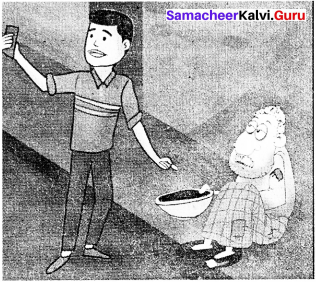

விருப்புடன் செய்க ஈகை
வெறுப்பு வேண்டாம் தம்பி
ஒரு பிறவியில் செய்க நன்மை
ஏழு பிறவியிலும் தவிர்க்க தீமை!
வாழ்த்தும் வயது இருப்பின் வாழ்த்தட்டும்
இல்லையெனில்
வணங்கட்டும் உங்களின் செய்கையை!
Question 41.
வங்கிக் கணக்கிலிருந்து பணம் எடுக்கும் படிவம் நிரப்புக.
Answer:
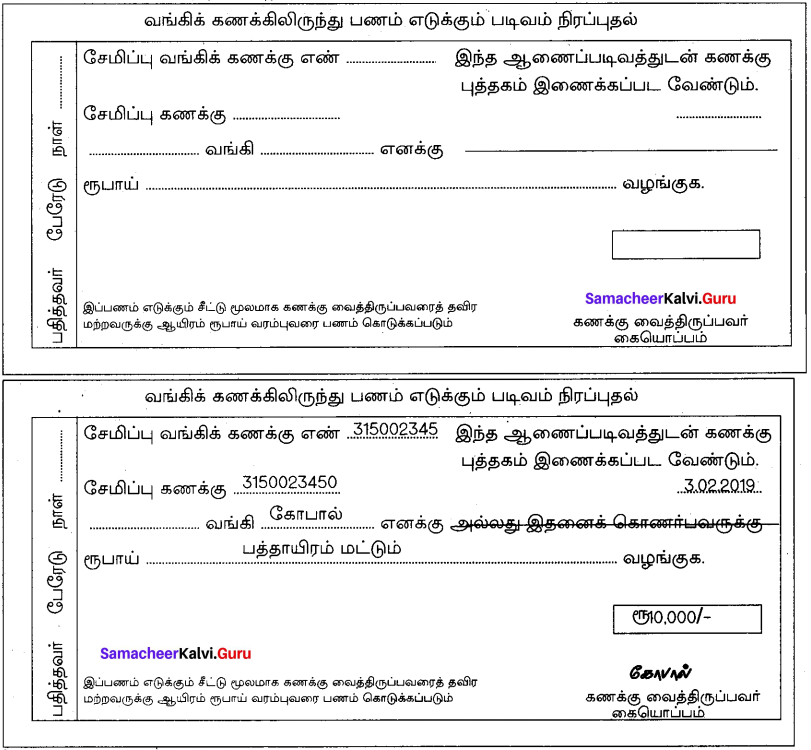

Question 42.
(அ) தொலைக்காட்சி நிகழ்வுகளையே பார்த்துக்கொண்டிருக்கும் தம்பி; திறன் பேசியிலேயே விளையாடிக்கொண்டிருக்கும் தங்கை, காணொலி விளையாட்டுகளில் மூழ்கியிருக்கும் தோழன், எப்போதும் சமூக ஊடகங்களில் இயங்கியபடி இருக்கும் தோழி. இவர்கள் எந்நேரமும் நடப்புலகில் இருக்காமல் கற்பனை உலகில் மிதப்பவர்களாக இருக்கிறார்கள் ! இவர்களை நெறிப்படுத்தி நடைமுறை உலகில் செயல்படவைக்க நீங்கள் செய்யும் முயற்சிகளைப் பட்டியல் இடுக.
Answer:
J
(அல்ல து)
(ஆ) மொழிபெயர்க்க.
Answer:
Malar : Devi, switch off the lights when you leave the room.
Devi : Yeah. We have to save electricity…
Malar : Our nation spends a lot of electricity for lighting up our streets in the night.
Devi : Who knows? In future, our country may launch artificial moons to light our night time sky!
Malar : I have read some other countries are going to launch these types of illumination satellites near future.
Devi : Superb news! If we launch artificial moons, they can assist in disaster relief by beaming light on areas that lost power!

விடை
மலர் : தேவி, அறையை விட்டு வெளி செல்லும் போது மின்விளக்குகளை அணைத்துவிட்டு செல்ல வேண்டும்.
தேவி : ஆமாம்! நாம் மின்சாரத்தைச் சேமிக்க வேண்டும்.
மலர் : இரவு நேரங்களில் மட்டும் தெருவிளக்குகளில் நம்நாட்டில் அதிக அளவு மின்சாரம் பயன்படுகிறது.
தேவி : யாருக்குத் தெரியும்? இனி வரும் காலங்களில் நமது நாட்டில் செயற்கை நிலாக்களை உருவாக்கி இரவு நேரங்களில் ஆகாயத்தில் வெளிச்சங்களை உருவாக்கலாமோ!
மலர் : நாடுகளில் வெளிச்சத்தை உண்டாக்கும் ஒரு சில செயற்கை கோள்கள் அமைத்திருப்பதாக நான் படித்திருக்கிறேன்.
தேவி : சிறப்பான செய்தி ! பேரிடர் காலங்களில் இந்த செயற்கை நிலாக்களைக் கொண்டு மின்சாரம் துண்டிக்கப்பட்ட இடங்களில் இதையே பயன்படுத்தலாம்.
பகுதி – V(மதிப்பெண்கள் : 24)
அனைத்து வினாக்களுக்கும் விரிவாக விடையளிக்க. [3 x 8 = 24]
Question 43.
(அ) மொழிப் பெயர்ப்பின் பயன்கள் யாவை?
Answer:
மொழிபெயர்ப்பின் துணை:
- இது மொழிபெயர்ப்புக் காலம், காலையில் எழுந்தவுடன் நாளிதழ்ப்படிப்பு, மொழிபெயர்ப்பு மூலமே நமக்குச் சாத்தியமாகிறது.
- இரவு தொலைக்காட்சியில் காணும், கேட்கும் செய்திகளும் மொழிபெயர்ப்பு மூலமே கிடைக்கின்றன.
- நம் பணிகள் பலவற்றிலும் மொழிபெயர்ப்பின் துணை இருந்து கொண்டே இருக்கிறது.

மொழிகளின் பங்கு :
1. இன்றைய வளரும் நாடுகளில் அறிவியலை உருவாக்க – அரசியலை உருவாக்க – பொருளியலை உருவாக்க – சமூகவியலை உருவாக்க – இலக்கியத்தை உருவாக்க மொழிபெயர்ப்பே உதவுகிறது.
2. மொழிபெயர்ப்பு, மனிதர்களையும், நாடுகளையும், காலங்களையும் இணைக்கிற நெடுஞ்சாலையாக இருக்கிறது. காலத்தால் இடத்தால் மொழியால் பிரிக்கப்பட்ட மானுடத்தை இணைக்கிறது;
3. கடந்த காலத்தை எதிர்காலத்துடன் இணைக்கும் அது மனித வாழ்வின் ஒரு பகுதியாகவே இருக்கிறது.
4. பல மொழிகளிலும் காணப்படும் சிறப்புக்கூறுகளை எல்லாம் ஒருங்கு சேர்த்து அனைவருக்கும் பொதுமையாக்குகிறது.
5. ஜெர்மனியில் ஓர் ஆண்டில் பிற மொழிகளிலிருந்து 5000 நூல்கள் வரை மொழிபெயர்க்கப்படுகின்றன.
6. புள்ளிவிவரப்படி அதிகமான தமிழ் நூல்கள் பிறமொழிகளில் மொழிபெயர்க்கப்பட்டுள்ளன.
7. அவ்வரிசையில் முதலிடம் ஆங்கிலம், இரண்டாமிடம் மலையாளம், அதைத் தொடர்ந்து அடுத்தடுத்து நிலைகளில் முறையே தெலுங்கு, இந்தி, கன்னடம், வடமொழி, ரஷ்யமொழி, வங்கமொழி, மராத்தி மொழி போன்றவை இடம்பெறுகின்றன.

அறிவியல் கண்டுபிடிப்புக்களும், இலக்கியப் படைப்புகளும் :
- மொழிபெயர்ப்பினால் புதிய சொற்கள் உருவாகி மொழிவளம் ஏற்படுகிறது.
- பிற இனத்தவரின் பண்பாடு, நாகரிகம், பழக்கவழக்கம் போன்றவற்றை அறியமுடிகிறது.
- அதிலிருந்து நல்லனவற்றை நாம் பெற்றுக்கொள்ள முடிகிறது. பிறமொழி இலக்கிய அறிவு கிடைக்கிறது. அதன்மூலம் நம் இலக்கியத்தை வளப்படுத்த முடிகிறது.
- உலகப்புகழ் பெற்ற அறிவியல் கண்டுபிடிப்புகளையும் இலக்கியப் படைப்புகளையும் அறிவதற்கு வாய்ப்பு ஏற்படுகிறது.
- கருத்துப் பகிர்வைத் தருவதால் மொழிபெயர்ப்பைப் பயன்கலை என்று குறிப்பிடுவார்கள்.
- மொழிபெயர்ப்பு மூலம் ஒரு நாட்டின் வரலாற்றிலும், இலக்கியத்திலும், பண்பாட்டிலும் வலிமையான தாக்கத்தை ஏற்படுத்த முடியும்.
(அல்ல து)
(ஆ) நாட்டு விழாக்கள் – விடுதலைப் போராட்ட வரலாறு – நாட்டின் முன்னேற்றத்தில் மாணவர் பங்கு – குறிப்புகளைக் கொண்டு ஒரு பக்க அளவில் மாணவப் பருவமும் நாட்டுப் பற்றும்’ என்ற தலைப்பில் மேடை உரை எழுதுக.
மாணவப் பருவமும் நாட்டுப் பற்றும்

முன்னுரை:
இந்தியா நிலப்பரப்பில் உலகில் ஏழாவது பெரிய நாடு மக்கள் தொகையில் இரண்டாவது பெரிய நாடு, இந்தியாவின் முதல் தலைமை அமைச்சர் ரோஜாவின் ராஜா, சமாதானப்புறா ஜவஹர்லால் நேரு இந்தியாவைப் பொருளாதாரத்தில் முன்னேற்ற வேண்டும் என்று ஐந்தாண்டு திட்டங்களைத் தீட்டினார். வளர்ச்சிப் பாதையில் சென்றுக் கொண்டிருக்கிற இந்தியாவில் இன்றைய மாணவர்கள் நாளைய மன்னர்கள், ஆகையால் மாணவர்களுக்குச் சமுதாயத் தொண்டு ஆற்ற வேண்டிய கடமைகள் உள்ளன.
விடுதலைக்கு முன்:
மாண்பு என்றால் மாட்சி, பெருமை, சிறப்பு என்று பொருள் அதனால் மாணாக்கர் என்று அழைக்கப்பட்ட சொல். மாணவர் என்று மருவிவிட்டது. இந்தியாவின் விடுதலைப் போராட்டத்திற்கு மகாத்மா காந்தி அடிகள் தலைமையேற்றார். ஒத்துழையாமை இயக்கத்தை அறிவித்தார். மாணவர்கள் கல்லூரியை விட்டு விலகினர். போராட்டங்களில் ஈடுபட்டனர். சிறை சென்றனர். இறுதியில் விடுதலை கிடைத்தது. உலகெங்கும் மாணவர்கள் கலந்து கொண்டு நடத்திய அறப்போராட்டங்கள் தோற்றதாக
வரலாறு இல்லை.

நாட்டின் முன்னேற்றம்:
இந்தியப் பேரரசு எத்துணை திட்டங்களைத் தீட்டிப் பொருள் உற்பத்தி செய்தாலும் வளர்ச்சிப் பாதையில் சென்றாலும் சாதிமத வேற்றுமை, மக்கள் பெருக்கம், அறியாமை, தீண்டாமை, பதுக்கல், கடத்தல் ஆகியவைகள் வளர்ச்சிக்குத் தடைக்கற்களாக உள்ளன. இத்தகைய விலங்குகளால் மக்கள் சிறைப்படுத்தப்பட்டுள்ளனர்.
சமுதாயத் தொண்டில் மாணவனின் பங்கு :
சாலைப் போக்குவரத்தைச் சீர் செய்ய காவலர்களுடன் சேர்ந்து பணியாற்ற வேண்டும். சாலையில் விபத்துகளினால் பாதிக்கப்பட்டவரை உடனே மருத்துவமனையில் கொண்டு போய்ச் சேர்க்க வேண்டும். உடல் ஊனமுற்றவர்களுக்கு மாணவர்கள் வழிகாட்டிகளாக விளங்கலாம்.
சாலையில் கிடக்கும் கண்ணாடித் துண்டுகள், ஆணிகள், வாழைப்பழத் தோல்கள், புகைந்து கொண்டிருக்கும் வெண்சுருட்டுத் துண்டுகள் போன்றவற்றை மாணவர்கள் வெட்கம் பாராமல் எடுத்துச் சென்று மக்கள் நடமாட்டம் இல்லாத இடத்தில் போட வேண்டும். மாணவர்கள் கண்மூடி வழக்கமான மூடப்பழக்க வழக்கங்களை மண்மூடிப் போகச் செய்தல் வேண்டும்.

முடிவுரை:
”ஒல்லும் வகையான் அறவினை ஓவாதே
செல்லும் வாயெல்லாம் செயல்”
என்றார் வள்ளுவர் தன்னால் இயலும் தொண்டுகளை எங்கெங்கு செய்ய இயலுமோ அங்கெல்லாம் செய்தல் வேண்டும் என்பது இக்குறளின் பொருள். தொட்டில் பழக்கம் சுடுகாடு மட்டும் என்பது பழமொழி இவைகளை எல்லாம் மாணவர்கள் பசுமையாக உள்ளத்தில் கொண்டு சமுதாயத் தொண்டு ஆற்றிட வேண்டும்.
Question 44.
(அ) அறிவியலாளர் ஸ்டீபன் ஹாக்கிங்குடன் விண்வெளிப் பயணம் என்னும் தலைப்பில் கற்பனைக் கதை ஒன்று எழுதுக.
Answer:
அறிவியலின் வளர்ச்சி மனிதனின் அறிவை விரிவாக்குகிறது. ஐயங்களை நீக்குகிறது. பழைய தவறான புரிதல்களை நீக்குகிறது. எண்ணங்களை மாற்றுகிறது அறிவியலால் ஒருகாலத்தில் நிறுவப்பட்டிருந்த கருத்து பின்னால் மறுக்கப்படுவதும் நேர்கிறது. மீண்டும் புதிய தடங்களைப் பதித்துப் புதிய பாதையிலே அறிவியல் இயங்குகிறது.
இயற்கையின் மர்ம முடிச்சுகளை அவிழ்க்கும் அறிவியல் சிந்தனை, போற்றுதலுக்குரியதாக இருக்கிறது. அதிலும் தன்னால் எந்த இயக்கமும் மேற்கொள்ள இயலாத நிலையிலும் அறிவியலின் இயங்கும் தன்மையை அறிந்து புது உண்மைகளைச் சொன்ன ஒருவரை உலகம் போற்றுவதில் வியப்பில்லை.

அவருடன் விண்வெளி பயணம் என்பது மிகவும் சுவாரசியமான ஒன்று. நானும் அவரும் விண்வெளியில் சென்று கொண்டு இருக்கும் போது நமது பால்வீதியில் கோடிக்கணக்கான விண்மீன்கள் ஒளிர்கின்றன. அவற்றுள் நம் ஞாயிறும் ஒன்று. ஒரு விண்மீனின் ஆயுள் கால முடிவில் உள்நோக்கிய ஈர்ப்பு விசை கூடுகிறது. அதனால் விண்மீன் சுருங்கத் தொடங்குகிறது. விண்மீன் சுருங்கச் சுருங்க அதன் ஈர்ப்பாற்றல் உயர்ந்து கொண்டே சென்று அளவற்றதாகிறது.
சில நேரங்களில் உண்மைப் புனைவை விடவும் வியப்பூட்டுவதாக அமைந்துவிடுகிறது. அப்படி ஓர் உண்மைதான் கருந்துளைகள் பற்றியதும், புனைவு இலக்கியம் படைப்பவர்களது கற்பனைகளையெல்லாம் மிஞ்சுவதாகவே கருந்துளைகள் பற்றிய உண்மைகள் உள்ளன. அதனை அறிவியல் உலகம் மிக மெதுவாகவே புரிந்துகொள்ள முயல்கிறது என்று ஸ்டிஃபன் ஹாக்கிங் கூறினார்.
(அல்லது)

(ஆ) அனுமான் ஆட்டத்தைக் கூறுக.
Answer:
- திடீரென்று மேளமும் நாதசுரமும் துரித கதியில் ஒலிக்கத் தொடங்கின.
- எதற்கென்று தெரியாமல் கூட்டம் திகைத்துப் பந்தலை நோக்குகையில் பெருங்குரல் எழுப்பியபடி அனுமார் பந்தல் கால் வழியாகக் கீழே குதித்தார்.
- அனுமார் வாலில் பெரிய தீப்பந்தம். ஜ்வாலை புகைவிட்டுக் கொண்டு எரிந்தது. கூட்டம் தானாகவே பின்னால் நகர்ந்தது.
- அனுமார் கால்களைத் தரையில் பதித்து உடம்பை ஒரு குலுக்குக் குலுக்கினார்.
- தீயின் ஜ்வாலை மடிந்து அலை பாய்ந்தது. கைகளைத் தரையில் ஊன்றி அனுமார் கரணமடித்தார்.
- சுருண்ட வால் இவன் பக்கமாக வந்து விழுந்தது.
- கூட்டம் அச்சத்தோடு கத்தியபடி அலைக்கழிந்தது.
- அனுமார் பெரிதாகச் சிரித்துக்கொண்டு நின்றார். அனுமார் நின்றதும் கூட்டம் கொஞ்சம் அமைதியுற்றது.
- முன்நோக்கி நகர்ந்து வந்தது. அனுமார் நேசப்பான்மையோடு சிரித்து வாலை மேலே தூக்கிச் சுற்றினார்.
- தீ வட்டமாகச் சுழன்றது. வேகம் கூடக்கூட, கூட்டம் இன்னும் முன்னால் நகர்ந்து வந்தது.
- இவன் நெருங்கி அனுமார் பக்கம் சென்றான்.
- அனுமார் இன்னொரு பாய்ச்சல் பாய்ந்து வேகமாக ஆட ஆரம்பித்தார். வர வர ஆட்டம் துரிதகதிக்குச் சென்றது.
- பதுங்கியும் பாய்ந்தும் ஆடினார்.
- ஆட ஆட, புழுதி புகை போல எழுந்தது. கழுத்துமணி அறுந்து கீழே விழுந்தது.
- ஒன்றையும் பொருட்படுத்தாமல் ஆட்டத்தில் தன்னை இழந்தவராக ஆடினார்.
- மேளமும், நாதசுரமும் அவர் ஆட்டத்தோடு இணைந்து செல்ல முடியவில்லை. தடுமாறிவிட்டது.
- மேல் மூச்சு வாங்க அனுமார் ஆட்டத்தை நிறுத்தினார். மேளமும் நாதசுரமும் நின்றன.
- அயர்ச்சியோடு மேளக்காரன் தோளிலிருந்து தவுலை இறக்கிக் கீழே வைத்தான்.
- ஆட்டம் முடிந்தது. தீர்மானமாகியது போல எஞ்சி இருந்த கூட்டமும் அவசர அவசரமாகக் கலைய ஆரம்பித்தது.

Question 45.
(அ) நூலகம் காட்டும் அறிவு’ – என்னும் தலைப்பில் கட்டுரை ஒன்று தருக. முன்னுரை:
Answer:
“வாழ்க்கை என்றொரு புத்தகம்
பக்கங்கள் எத்தனை யார் அறிவார்?”
எனும் வினாவால் வாழ்க்கையே புத்தகம்தான் என எடுத்தியம்பும் வல்லிக்கண்ணனின் பார்வை வீச்சு சிறப்புடையதாகும். வாழ்க்கையையே புத்தக நோக்கினில் பார்த்ததற்கும், வாழ்க்கையில் பள்ளிப் புத்தகம் தவிர வேறு புத்தகங்களைப் பார்த்ததேயில்லை என்பதற்கும் எத்தனை வேறுபாடு. இங்குதான் நூலகத்தை மறந்த நிலை என்பது வெளிப்படுகிறது.
அறிஞர்களை உருவாக்கும் நூலகம்:
அடுத்தவரைப் பற்றி பேசிப்பேசி நாட்களை ஓட்டியும், போட்டியும், வஞ்சமும் நிறைந்த உலகில் ஒரு நிமிடம் நூலகத்தை நோக்கிப் பயணத்தைத் திருப்புங்கள். அயர்வுகளைத் தீர்க்கும் அருமருந்து அங்குதான் உள்ளது. பல்வேறு அறிவியலறிஞர்களும், அறிஞர்களும் இங்கிருந்து தான் வெளிப்படுகின்றனர்.

எல்லா நூலையும் நாம் விலை கொடுத்து வாங்கிக் கற்க முடியாது. ஆனால் எல்லா நூல்களின் இருப்பிடமான நூல் நிலையம் சென்றால் அங்கிருந்து நாம் பல நூல்களைக் கற்கலாம் அல்லவா?
நூலகத்தினை பயன்படுத்தும் விதம்:
நூலகத்தினை எவ்வாறெல்லாம் பயன்படுத்துகின்றனர் எனில், பத்திரிகை படிக்க வருபவர் சிலர் ; விளையாட்டுச் செய்திகளை விருப்பமுடன் படிப்பவர் பலர்; இதழ்களில் அட்டைப்படங்களைக் காண வருபவர்கள் சிலர்; திரையுலகை தரிசிக்க வருபவர் பலர் என எண்ணற்ற முகங்களை வழி நடத்துவது இந்நூல் நிலையங்களாகும்.
நூல்களைக்கூட படித்திட வாங்கிச்சென்று, வேண்டிய பக்கங்களைக் கிழித்து எடுத்துத் திருப்பித் தருபவர் உண்டு. நூலினில் பல படங்களை வரைந்து வைத்தல், சில பெயர்களை எழுதுதல் என எண்ணற்ற சிறு செயல்கள் செய்து தமது சிறுமையை வெளிப்படுத்துபவர் உளர்.
அறிவுக்களஞ்சியம் :
பிறமொழி அறிவு வளர்ந்திட உதவும் நூல்கள் உதவியால், பிற மொழியாளரிடம் பேசும் அளவிற்கு தம்மை உயர்த்திக் கொண்டவர் உண்டு. மொழிகளைப் பற்றி நூல்கள் மட்டுமல்லாமல் அறிவியல்,பழங்கால வரலாறுகள், கதைகள், நாவல்கள், கவிதை நூல்கள், கட்டுரைத் தொகுப்புகள், சிறு தொழில் கற்றிட உதவும் நூல்கள், சமையல் குறிப்புகள் எனப் பல்வேறு பிரிவுகளில் அமைந்து அறிவுக் களஞ்சியமாய்த் திகழ்கிறது.

பல்வேறு நூலகங்களின் பெயர்கள் :
நூலகங்கள் இல்லாத இடங்களில்லை. பள்ளிகள், கல்லூரிகள், பல்கலைக் கழகங்கள் முதலிய இடங்களில் உள்ளது. ஊர்கள் தோறும், மாவட்டங்கள் தோறும் நூலகங்கள் உண்டு. மாநிலத்தின் தலைமையிடத்திலும் நூலகம் உண்டு. சென்னையில் மாநில மைய நூலகமான கன்னிமாரா நூலகம்’ அமைந்துள்ளது.
தேவநேயப் பாவாணர் நூலகம், மறைமலையடிகள் நூலகம், சரஸ்வதி மஹால் நூலகம், தஞ்சை தமிழ் பல்கலைக்கழக நூலகம், சாது சேஷய்யா ஓரியண்டல் நூலகம், வ.உ.சி. நூலகம், கவிமணி நூலகம் என்பன போன்ற பல நூலகங்கள் மாவட்டங்கள் வாரியாக அமைக்கப்பட்டுள்ளன. தற்போது வள்ளுவரின் பெயரில் நூலகங்கள் ஏற்படுத்தப்பட்டு வருகின்றன.
அறிவுச் சுரங்கமாய் நூலகம்:
நூலகங்களில் நூல்கள் பெற வேண்டுமானால், நூலக உறுப்பினராகிக் கொண்டு அதன் பிறகு நூலை எடுத்துக் கொள்ளலாம். மனிதன் அறிவுச் சுரங்கமாய் விளங்க நூலகமே முக்கியக் காரணம். பள்ளிகளில் மாணவர்கள் பேச்சுப் போட்டியில், கட்டுரைப் போட்டியில் பரிசுகளைப் பெற்றிட நூலகமும் ஒரு காரணமே.

எவரொருவர் அறிவின் பிறப்பிடமாகத் திகழ்கிறாரோ அவரைத் துன்பம் நெருங்குவதில்லை. அவரது அறிவுத் திறனால் துன்பம் வராமல் காக்கப்படுகிறது. இதையே வள்ளுவர்,
“எதிரதாக் காக்கும் அறிவினார்க்கு இல்லை
அதிர வருவதோர் நோய் ” – எனும்
குறள் மூலம் அறிவுறுத்துகிறார். இவ்வாறு ஒருவர் அறிவின் சுடராய்த் திகழ நூலகம் மிக முக்கியமான வழிகாட்டியாகும்.
முடிவுரை:
இவ்வாறு நூலகமானது ஒரு மனிதனுக்கு அறிவு, சிந்திக்கும் ஆற்றல் வழங்குவதோடு தகுதியுடையவராய் எழச் செய்யும் அற்புத மருந்தாகும். மாணவப் பருவத்திலேயே நூலகத்தினைப் பயன்படுத்துதல் இன்றியமையாதது.
எங்கே கிளம்பி விட்டீர்கள், நூலக உறுப்பினர் ஆகத்தானே!
(அல்ல து)

(ஆ) குறிப்புகளைப் பயன்படுத்திக் கட்டுரை ஒன்று தருக.
முன்னுரை – வரதட்சணை – பண்டைய பெண்களின் பெருமை – ”திருமணம் என்பது ஆயிரம் காலத்துப் பயிர்” – பலியாகும் பெண்கள் – ” மாமியார் உடைத்தால் மண்சட்டி திருமணம் – வேண்டாம் வரதட்சணை – “பெண்கள் நாட்டின் கண்கள்’ – முடிவுரை.
வேண்டாம் வரதட்சணை
குறிப்புச் சட்டகம்
முன்னுரை
பொருளுரை: வரதட்சணைக் கொடுமை
பலியாகும் பெண்கள்
திருமணம்
வேண்டாம் வரதட்சணை
முடிவுரை –
முன்னுரை
வரதட்சணை என்பது, மணமான பெண் தன் தாய் வீட்டிலிருந்து கொண்டு வரும் சீதனம், பெண்களுக்கு மேலும் பொறுப்புகளையும், உறவுகளையும் சேர்க்கக் கூடியது. அவளது திருமண வாழ்க்கையாகும். இது திருமணத்தின் தனித்தன்மை என்று நாம் குறிப்பிடலாம். பெண்கள் குடும்பத் தலைவி என்ற பொறுப்பை ஏற்று, செயல்பட்டு தன் வாழ்க்கையில் முன்னேறுவது திருமணத்திற்குப் பின் என்றும் நாம் கூறலாம்.

‘திருமணம் என்பது ஆயிரம் காலத்துப் பயிர்’ என்பார்கள். அக்காலங்களில் பெண்கள் வேலைக்குச் செல்லாத காரணத்தால், வீட்டில் எல்லா வேலைகளையும் சுமந்து தன் கணவனது சொற்படி நடந்து அவனது பொருளாதார மேம்பாட்டிற்காக சிறு அன்பளிப்பாக இச்சீதனம் வழங்கப்பட்டது.
வரதட்சணைக் கொடுமை:
திருமணம் சொர்க்கத்தில் நிச்சயிக்கப்படுகிறது என்பார்கள். ஆனால், திருமணம் வரதட்சணையால் தான் நிச்சயிக்கப்படுகிறது. அக்காலத்திலிருந்தே மணமகனின் வீட்டார். பெண் வீட்டாரிடம் வரதட்சணைக் கேட்டு வருகின்றனர். பெண் வீட்டாரோ, அதை எப்படிக் கொடுக்கலாம் என்ற வருத்தத்தில் இருப்பார்கள்.
பலியாகும் பெண்கள் :
திருமணம் முடிந்து சில நாட்கள் செல்ல, மாமியாரும், அப்பெண்ணுடைய கணவரும் அவளைக் கொடுமைப்படுத்துவார்கள். “மாமியார் உடைந்தால் மண்சட்டி, மருமகள் உடைத்தால் அது பொன் ஓடாக மாறுவதேன்?” அவர்களோ, தொடர்ந்து கொடுமைப்படுத்திக் கொண்டே இருப்பர். இதனால் ஏராளமான பெண்கள் தற்கொலை முயற்சியில் ஈடுபடுகிறார்கள்.

திருமணம்:
திருமணம் என்பதொரு புனிதமானச் செயல், அப்படிப்பட்ட செயலை வரதட்சணை என்னும் பயங்கர உருவத்தால் நாம் பாவச் செயலாக்கக்கூடாது. வரதட்சணை கேட்டாலும் அவரவர் தகுதிக்கு ஏற்றபடி கேட்கவேண்டும். இக்காலத்தில் வரதட்சணை கேட்பவர்கள் மீது வழக்குத் தொடரலாம்.
முன், சீதனம் என்று அழைக்கப்பட்டது. பின் கட்டாயமாக்கப்பட்டு வரதட்சணை என்று அழைக்கப்படுகிறது. முன், அன்பளிப்பாக வழங்கப்பட்டது. இப்போது பல கொடுமைகளைப் புரியும் வழக்கமாக்கப்பட்டுள்ளது. இதனால் பெண்களுக்கு நேரும் கொடுமைகள் பற்பல.
“உன் விழிப்பில்தான் நாட்டின் பிழைப்பே உள்ளது”
வேண்டாம் வரதட்சணை :
பெண்கள் இல்லையேல் நாட்டின் வளர்ச்சி இல்லை. இத்தகைய பெண்களைக் கொடுமைப்படுத்தி பணம் பறிப்பது வேதனைக்குரிய விஷயம்.

முடிவுரை :
வீட்டிற்கு வரும் பெண் வரதட்சணையோடு வராமல், பாசம், பண்பு, நல்ல குணம், நட்பு போன்ற நற்குணங்கள் பலவற்றைக் கொண்டு வந்தால், புன்னகையும் பொன் நகையாகும். ஓர் ஆணுக்குக் கல்வியளிப்பது அவருக்கு மட்டுமே சிறப்பு. ஆனால், ஒரு பெண்ணுக்குக் கல்வியளித்தல் என்பது, அது அக்குடும்பத்திற்கே கல்வியளிப்பது போன்றதாகும். வரதட்சணைக்குப் பதிலாகப் படித்த பெண்ணாக, கல்வி கேள்விகளில் சிறந்தவளாக்குதல் வீட்டிற்கும், ஏன் நாட்டிற்கும் பெருமை. எனவே, வரதட்சணையை ஒழிக்க முயன்று நமது நாட்டினை ஒரு பூஞ்சோலையாக மாற்றிக் காட்டுவோம்.


![]()

![]()
![]()




![]()

![]()
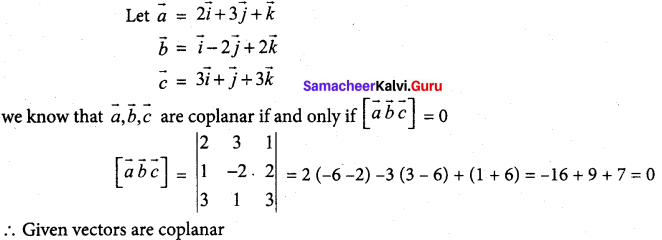




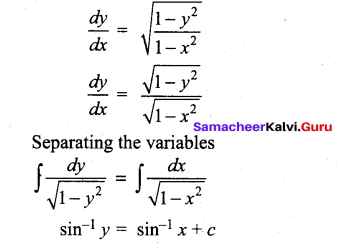
![]()
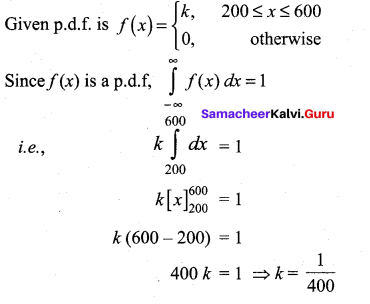
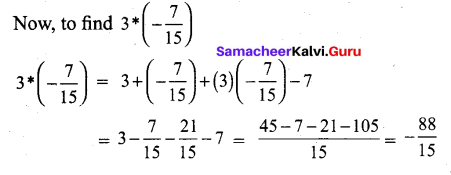
![]()
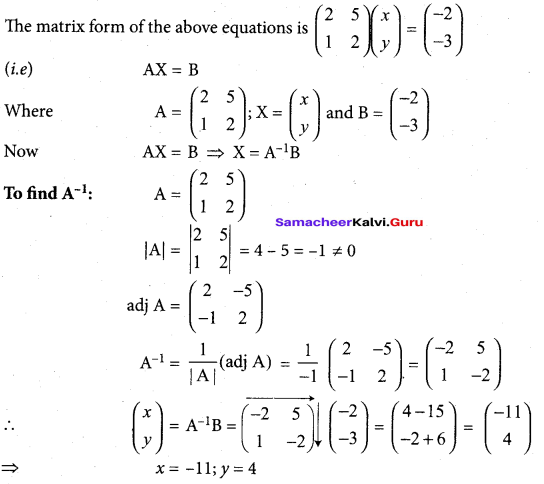

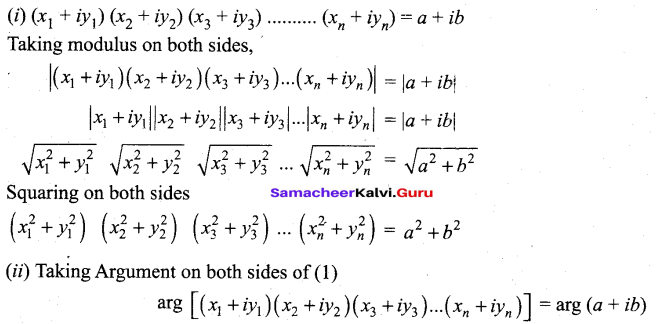

![]()




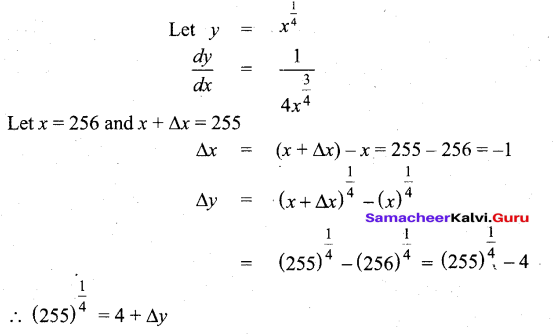
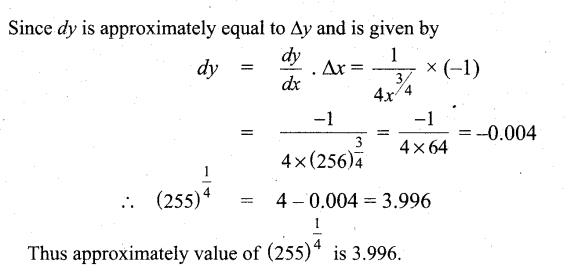
![]()
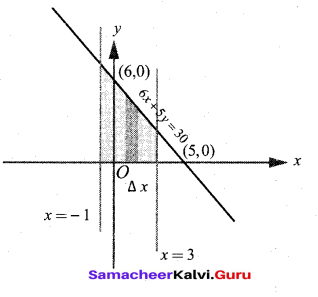




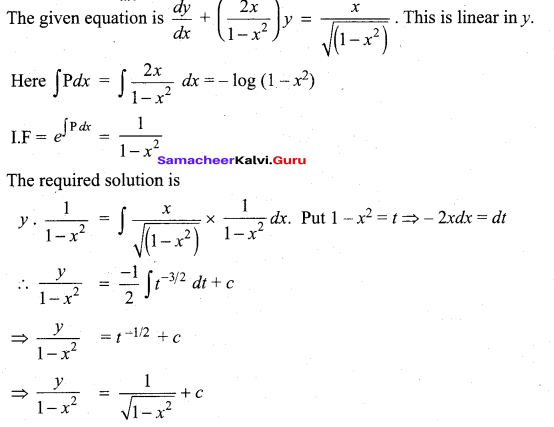
![]()
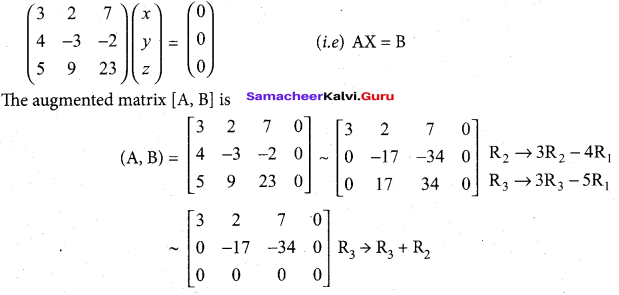

![]()
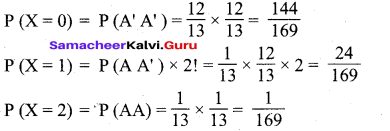
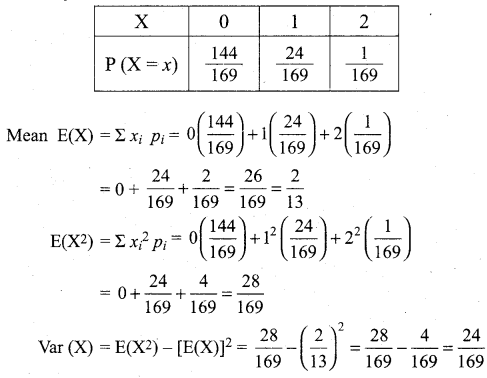
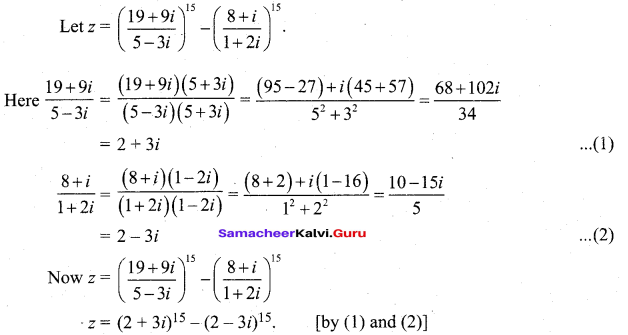
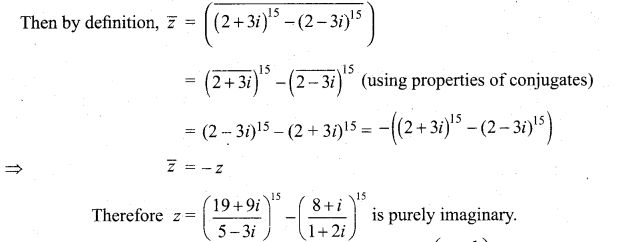
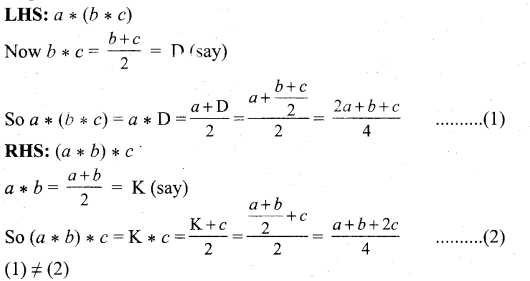
![]()
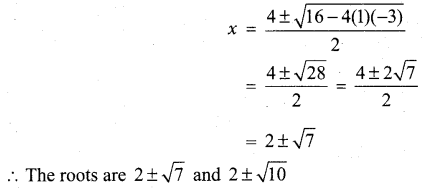
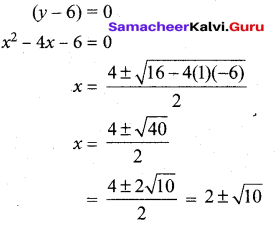
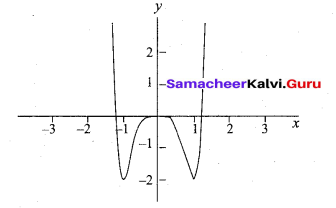

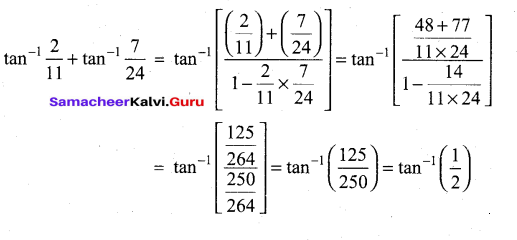
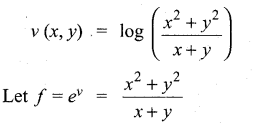
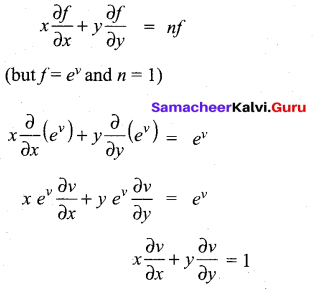
![]()
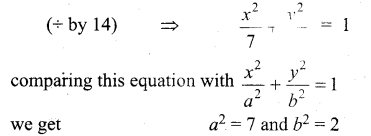
![]()


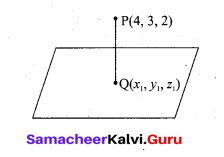

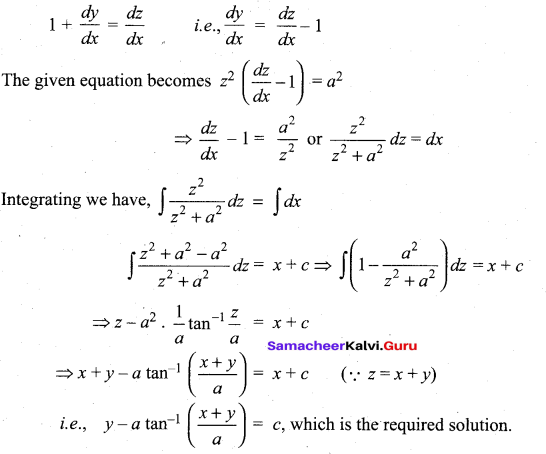
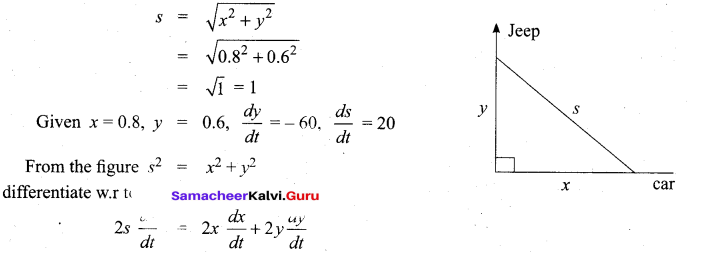
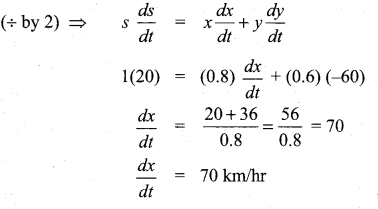
![]()
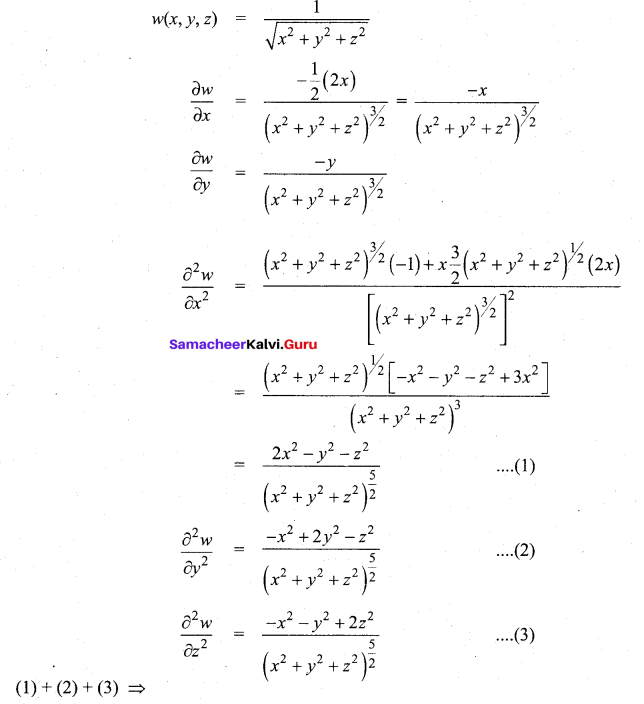
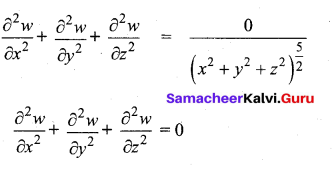
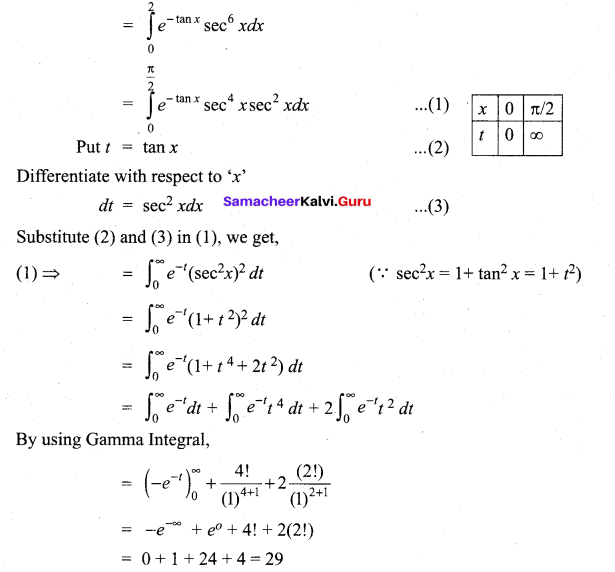

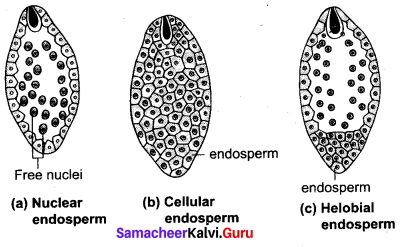
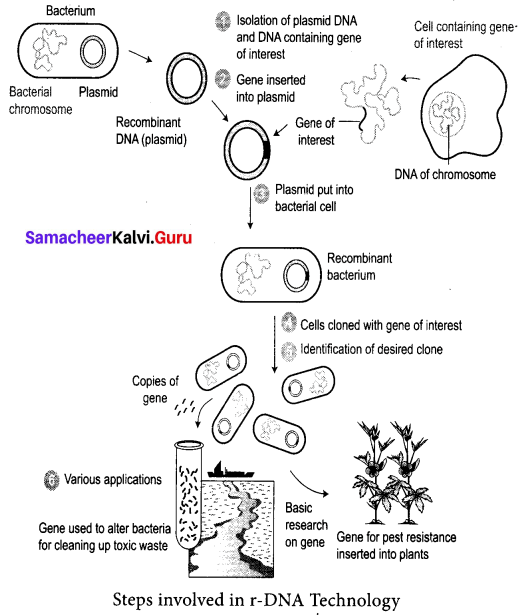
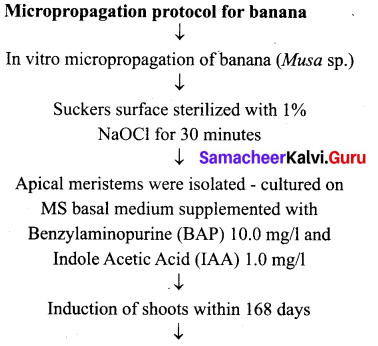
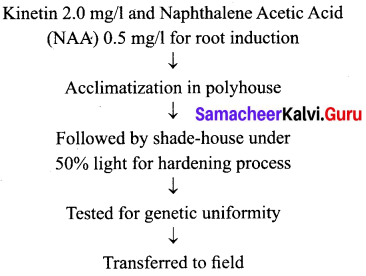

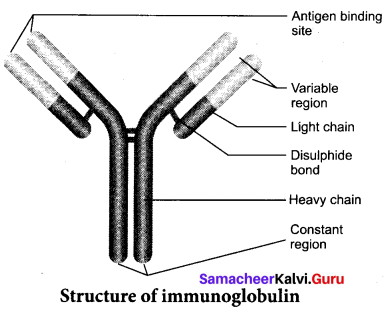





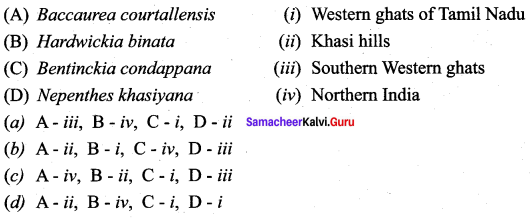
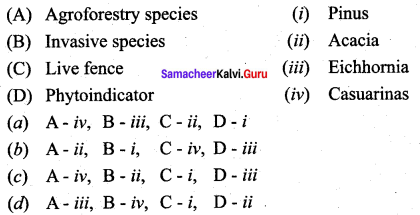





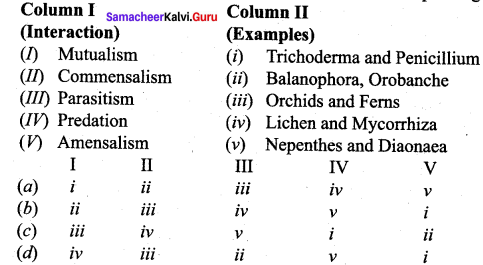
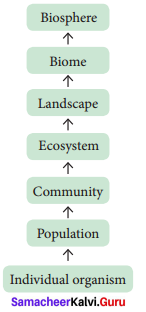
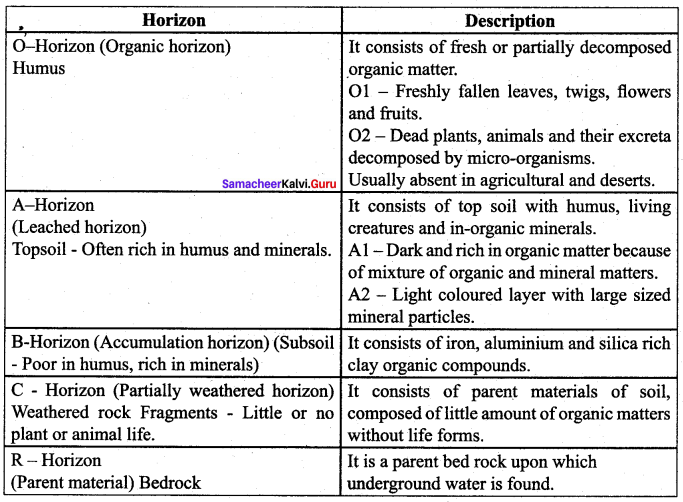


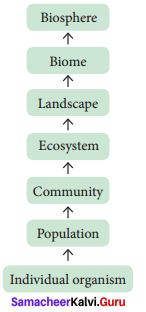
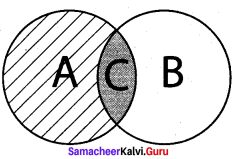


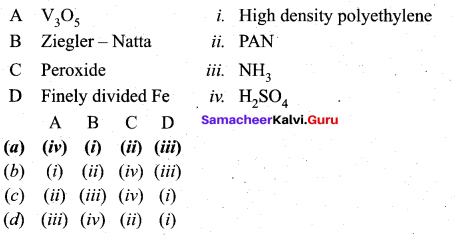




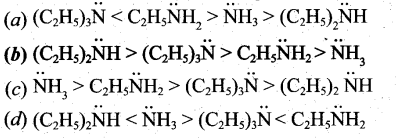



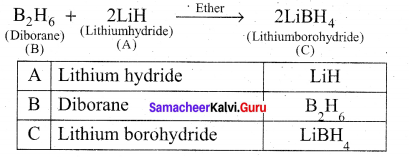
 In∆ACG,
In∆ACG,